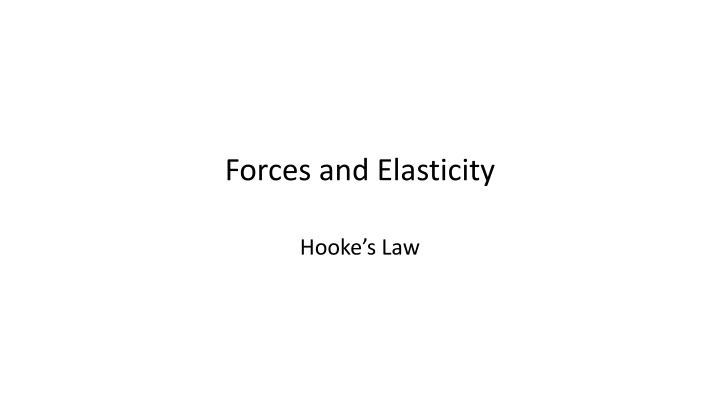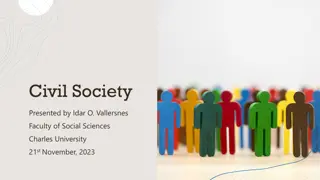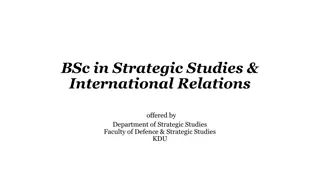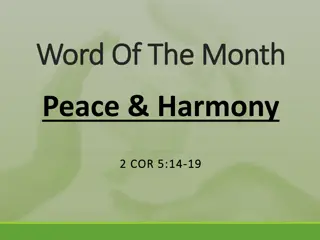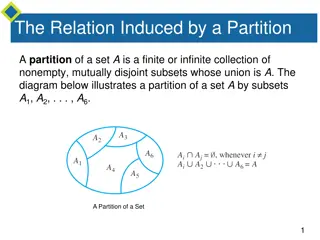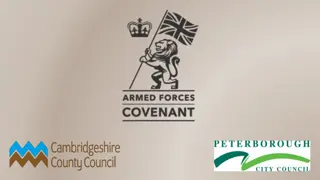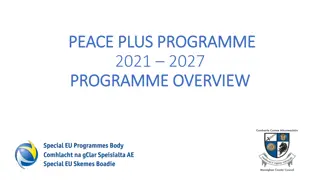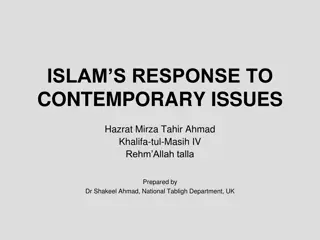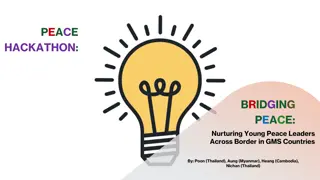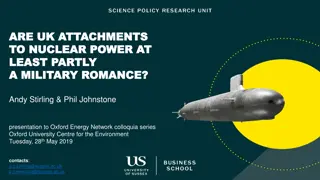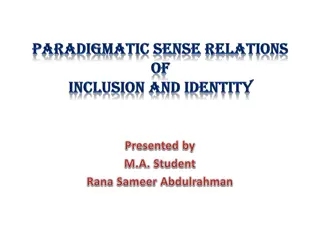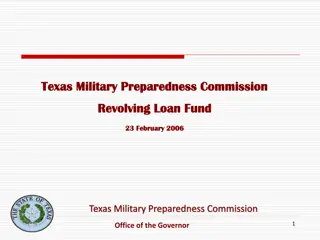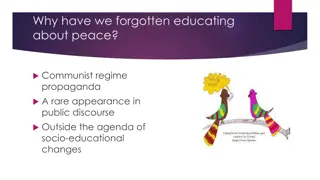Civil-Military Relations: Janowitz, Pragmatism & Peace Support Operations
This content delves into the dynamics of civil-military relations, featuring insights from scholars like Janowitz and Huntington. It explores the intersections of democracy, military professionalism, and the role of the state in international relations. The context spans from historical traditions to modern perspectives, shedding light on the complexities of managing military forces in peace support operations.
Download Presentation

Please find below an Image/Link to download the presentation.
The content on the website is provided AS IS for your information and personal use only. It may not be sold, licensed, or shared on other websites without obtaining consent from the author.If you encounter any issues during the download, it is possible that the publisher has removed the file from their server.
You are allowed to download the files provided on this website for personal or commercial use, subject to the condition that they are used lawfully. All files are the property of their respective owners.
The content on the website is provided AS IS for your information and personal use only. It may not be sold, licensed, or shared on other websites without obtaining consent from the author.
E N D
Presentation Transcript
Forces and Elasticity Hooke s Law
Forces and Elasticity Some objects can be deformed if they are bent or stretched, and depending on the type of object (eg: what it is made out of) this bending or stretching can be temporary or permanent. For an object to be bent, stretched or compressed, two or more forces must be acting on the object, and in opposition. If there was only one force the object would just move in the direction of the applied force. WHY? If an object is bent, stretched or compressed, BUT is able to RETURN to its ORIGINAL SHAPE once the force is removed it is said to have been ELASTICALLY DEFORMED. If an object is UNABLE to RETURN to its ORIGINAL SHAPE once the force is removed it is said to have been INELASTICALLY DEFORMED.
Forces and Elasticity ELASTIC OBJECT If an object is bent, stretched or compressed, BUT is able to RETURN to its ORIGINAL SHAPE once the force is removed it is said to have been ELASTICALLY DEFORMED. INELASTIC OBJECT If an object is bent, stretched or compressed, BUT is UNABLE to RETURN to its ORIGINAL SHAPE once the force is removed it is said to have been INELASTICALLY DEFORMED. We sometimes refer to objects in the second category as BROKEN
Forces and Elasticity A spring or elastic object which is reduced in length as a result of applied opposing forces is COMPRESSED A spring or elastic object which is increased in length as a result of applied opposing forces is STRETCHED Stretching and compression are directly proportional to the magnitude of the force applied ........ up to a point:
Exercise Q. A spring at rest has a length of 25cm. A lead ball is suspended from the spring which has a spring constant of 20 N/m. The spring extends to 30cm. Calculate the weight of the lead ball.
Exercise Q. A force of 40N is used to compress a spring with a spring constant of 200 N/m. Calculate the compression on the spring.
Proportionality Elastic objects, such as springs will only stretch and return to normal up to a certain point, after which they will be unable to return to the normal state. This is the Limit of Proportionality NOTE: an elastic material can be stretched past the LOP and still return to its original shape. It is only when the ELASTIC LIMIT is passed that the behaviour turns from ELASTIC to PLASTIC and PERMANENT deformation occurs. HOOKE S Law allows us to investigate this property.
Hookes Law Up to the LIMIT OF PROPORTIONALITY F = Applied force (N) k = Spring constant ( N/m) e = Extension (m)
Exercises - Hookes Law Q. A spring with a spring constant of 250 N/m is extended from a rest length of 2m to a stretched length of 2.5m. Calculate the magnitude of the applied force, in Newtons. Q. A spring extends elastically by 10cm when a force of 2N is applied. Calculate the value of the spring constant.
Elastic Potential Energy Any spring or elastic substance under load (ie: with a force being applied and maintained) will have an amount of energy in its Elastic Potential Energy Store. E.P.E. is calculated using the equation: E.P.E. is measured in Joules J k is the spring constant measured in Newtons per Metre N/m e is the extension (or compression) measured in Metres m
Exercises - Elastic Potential Energy Q. A spring with a spring constant of 25N/m is stretched and held at 9 cm from its rest length of 4 cm. Calculate the magnitude of the energy in the springs elastic potential energy store. Q. A spring has 625J of elastic potential energy in its EPE store. The spring is stretched from rest (1m length) to 6m. Calculate the spring constant k in N/m.
Exercises - Elastic Potential Energy Q. A spring has a spring constant of 175 N/m and a rest length of 20cm. 55 J of energy is in the EPE. What is the extended length of the spring? State your answer in the correct units to 2 d.p. The extended length of the spring is therefore 0.2m (20cm) plus 0.79m (79cm) = 0.99m (99cm)
